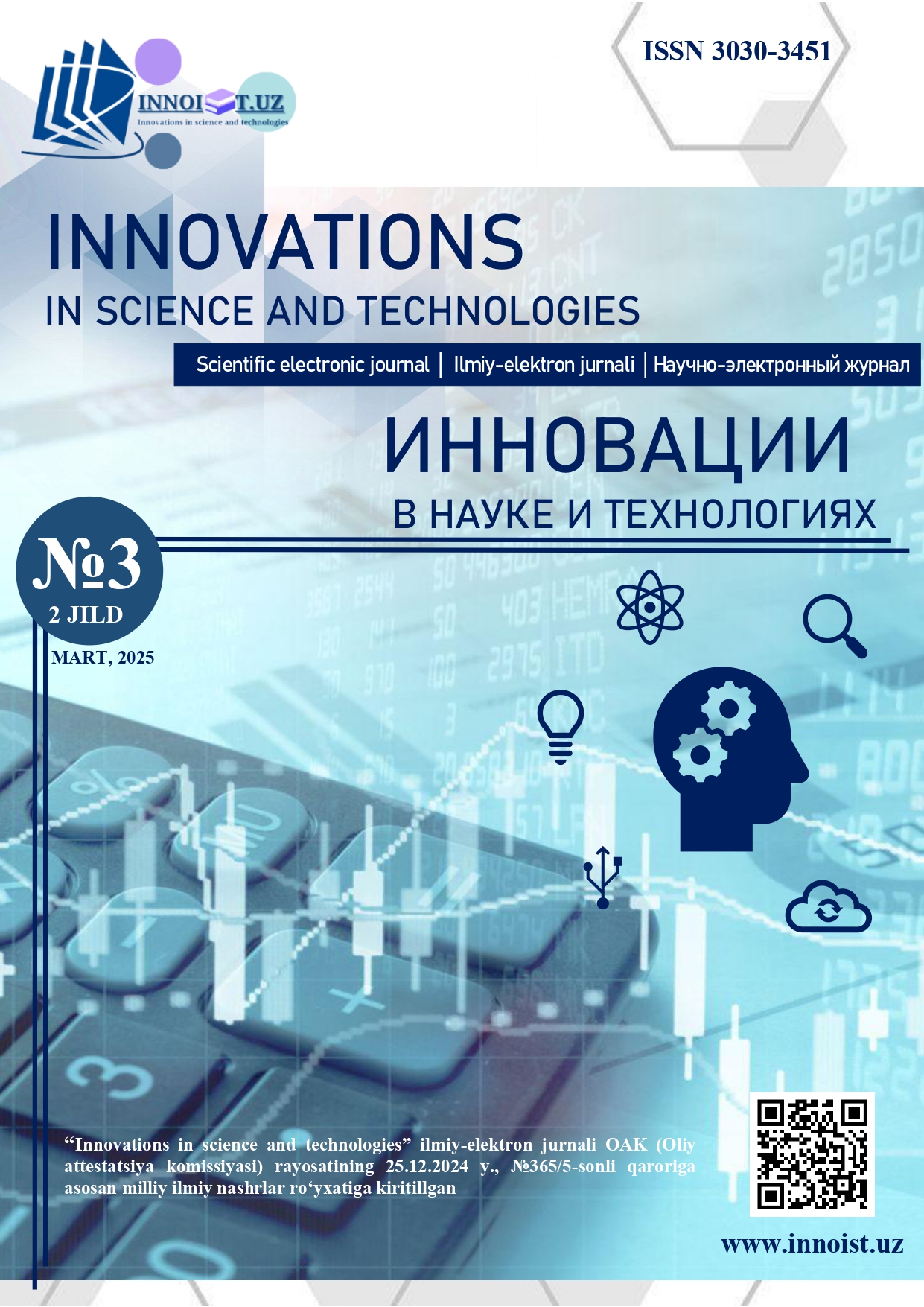MODERN DIRECTIONS OF ORGANIZATION OF DUAL EDUCATIONSYSTEM IN HIGHER EDUCATION
Keywords:
innovative technologies, technologies with a scientific capacity, acceleration of the processes of reducing the “life cycles” of knowledge, model of a dual education system in higher education.Abstract
The formation of any country as a developed (innovative) state and the emergence of a stable economy are associated with the integration of education, research and innovation sectors. This article discusses the main features and prospects of developing and implementing a project to introduce a dual education system in Uzbekistan.
Downloads
References
Unger M., Polt W. (2017) “The Knowledge Triangle between Research, Education and Innovation — A Conceptual Discussion” // Foresight and STI Governance, vol. 11, no. 2, pp. 10–26.
Yunusov A.R. “Knowledge production – a systematic approach to scientific education and innovation policy in Uzbek universities” // Prospects for Improving the Integration of Science-Education-Production in the Preparation of Competitive Personnel. Materials of the International Scientific and Practical Conference, International Nordic University, November 2023.
Rejapov X.X. “Influences of financing on professional staff training” // Economics and Finance (Uzbekistan). 2017. №1.
Paul Orsmond, Stephen Merry, Kevin Reiling. (2022) “Interconnected learning between university and the workplace: a socio-cultural perspective of graduate employability in the UK” // Oxford Review of Education, vol. 48, no. 3, pp. 303–319.
Daniela Olo, Leonida Correia, Maria da Conceição Rego. (2022) “(Mis)match between higher education supply and labour market needs: evidence from Portugal” // Higher Education, Skills and Work-Based Learning, vol. 12, no. 3, pp. 496–518.
OECD. (2017) “In-Depth Analysis of the Labour Market Relevance and Outcomes of Higher Education Systems: Analytical Framework and Country Practices Report” // Enhancing Higher Education System Performance, OECD, Paris, p. 163.
“Annual Report and Accounts 2015–16” // www.britishcouncil.org, pp. 54–55.
“National Report on Science and Innovation of the Republic of Uzbekistan for 2017–2020” // Tashkent, 2021.
Little B., Arthur L. (2010) “Less time to study, less well prepared for work, yet satisfied with higher education: a UK perspective on links between higher education and the labour market” // Journal of Education and Work, vol. 23, no. 3, pp. 275–296.
Macneil I. (1988) “Contract Remedies: A Need for Better Efficiency Analysis” // Journal of Institutional and Theoretical Economics, vol. 144, no. 1, pp. 7–9.
Melvin R. Mattson, Tsamil Salshi Sangari. (1993) “Big Ideas in Services Marketing” // International Journal of Physical Distribution, vol. 23, no. 8, pp. 16–30.
Downloads
Published
Issue
Section
License
Copyright (c) 2025 Karimov Muzaffar Abdumalik ugli (Author)

This work is licensed under a Creative Commons Attribution-NonCommercial-NoDerivatives 4.0 International License.
License Terms of our Journal











